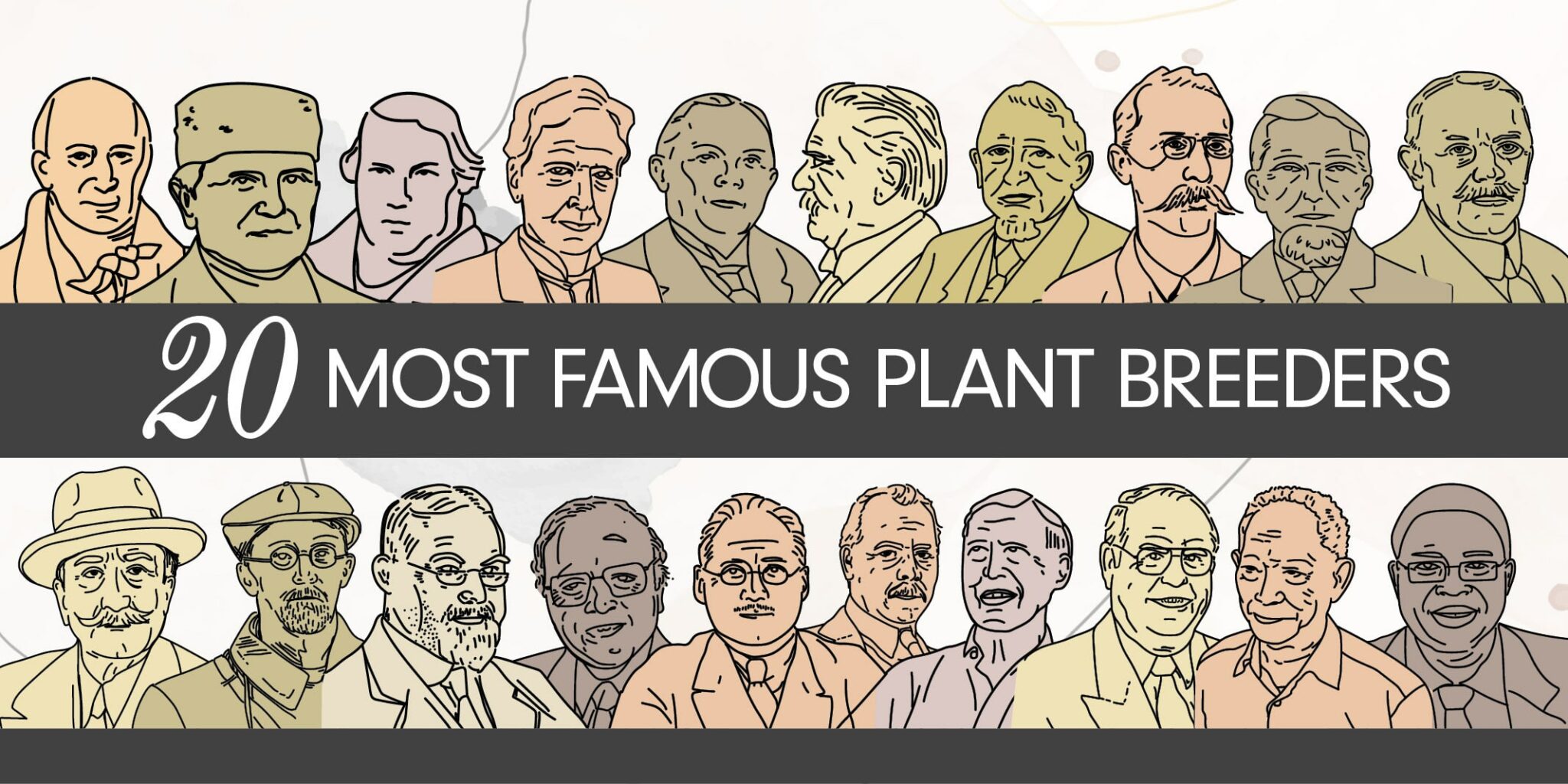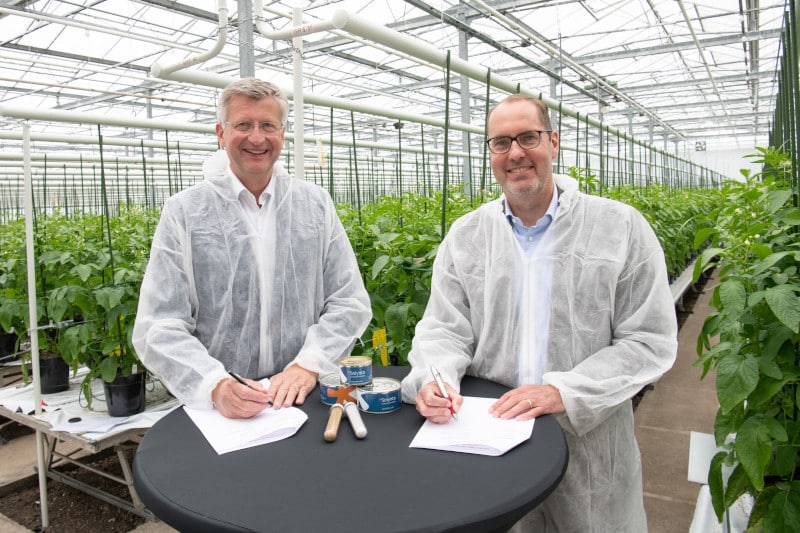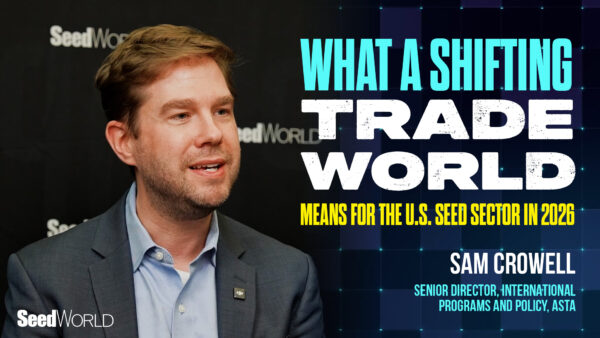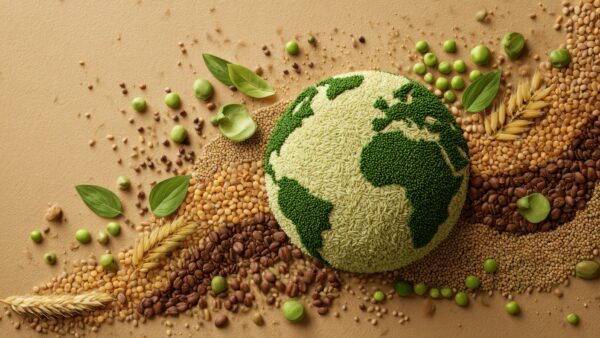Looking back after two centuries of Mendel
In the year where it has been two centuries since Gregor Mendel was born, it seems appropriate to look at some of the other people who have made a bigger than normal contribution to plant breeding and have enriched our world and our plates with new, better, higher yielding and more delicious plant varieties.
Nowadays, plant breeding is very much an interdisciplinary activity, with lots of input from other departments within a seed company, such as the plant pathology, molecular or marketing departments. But in the old days it was often a one-person job, and from time to time it is good to look back and see on whose shoulders we are standing. No doubt, there are many others that also deserve a spot in this list. Feel free to send us your proposals, and why those persons should be on the list as well.
Read parts one, three and four.

Luitje Broekema (1850 – 1936), Dutch plant breeder
Luitje Broekema, a lecturer at the then Agricultural College in Wageningen, started crossing wheat varieties. In 1899, this led to a variety named ‘Wilhelmina’. In the early 1930s, this variety accounted for more than two-thirds of the Dutch winter wheat crop. One of the most remarkable features of the ‘Wilhelmina’ wheat was that it was composed as a variety of several lines. Broekema believed that this made the variety better adapted to the different soil and climate conditions under which it was cultivated. Russian geneticist, botanist and breeder Vavilov once described it as one of the most productive wheat varieties in Western Europe. Two years after the introduction of ‘Wilhelmina’, Broekema created variety ‘Juliana’, marketed in 1921. The qualities of ‘Juliana’ surpassed those of ‘Wilhelmina’ and at the end of the 1930s and the beginning of the Second World War, Juliana wheat accounted for half of the Dutch winter wheat crop.
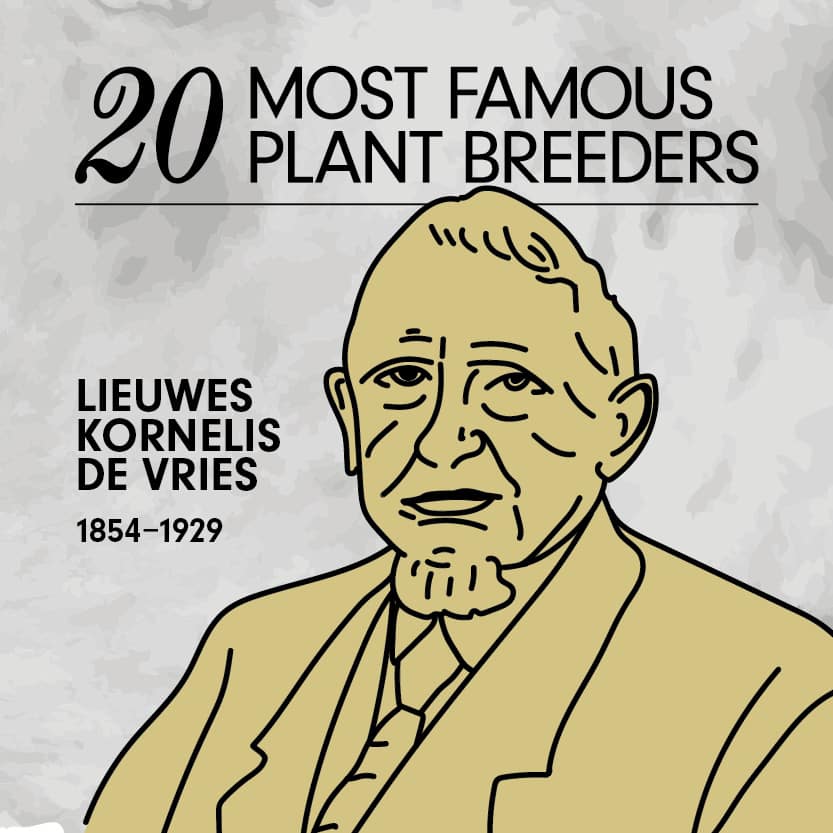
Lieuwes Kornelis de Vries (1854, 1929), Teacher and plant breeder
De Vries worked until he was 21 on the farm and then went to study for a teaching degree. In 1883 he became the head teacher at a primary school. In 1894 he took the agricultural instrument test and in 1901 obtained a horticulture degree. Besides his work as a schoolmaster, he gave agricultural winter courses. In 1898 he was asked to organize a testing ground for growing potatoes, which he managed for 25 years. In 25 years, he grew about 150 varieties, of which the variety ‘Bintje’ was by far the most successful. This variety has been the most important potato on Dutch menus for a long time and was the most extensively cultivated potato variety in the 20th century.
Fifty years after Bintje was introduced, the variety occupied about one half of the potato area of continental West-Europe. By 1975, Bintje accounted for 70 per cent of the area grown for human consumption in The Netherlands.
Nils Hjalmar Nilsson (1856, 1925) – Swedish botanist and plant breeder
Nilsson received his doctorate in botany in Lund in 1886, became assistant at the Swedish Seed Breeding Institute at Svalöf in 1888, and was director of the same institute from 1890 to 1924. He was awarded the title of professor in 1902. Under Nilsson’s leadership, the working method at Svalöf was changed from the previously used mass selection of experimentally grown crops to the so-called pedigree cultivation, i.e., the cultivation of offspring from individual plants, and the selection of the obtained strains. The results of this soon showed themselves in a number of cereal varieties of outstanding quality, and the Svalöf institution, under his direction, influenced agriculture with a number of excellent cereal varieties. Combined with his writings it gained a considerable following at home and abroad. During the 20th century he devoted his scientific work mainly to the investigation of a rational method for the breeding of root crops.

Geert Veenhuizen (1857 – 1930), Dutch potato grower and plant breeder
Veenhuizen left primary school at 13 and went to work for a tree grower in Noordbroek. With a short interruption due to military service, he worked there until he was 23. He subsequently worked for nurseries in Gouda and Boskoop. He modernised his father-in-law’s horticultural business and also started work as a garden architect. At that time, the potato starch industry was booming and Veenhuizen became interested in growing potatoes. He was placed in charge of a test field of a local agricultural society in 1889 and became cultivation manager of a central test field in Sappemeer in 1903. He developed many new potato varieties, including the very famous ‘Eigenheimer’ variety in 1893, ‘Red Star’, ‘Bravo’ and ‘Thorbecke’. His variety ‘Eigenheimer’ reached about a quarter of the Dutch potato acreage in the 1930ies. His seed potatoes were also exported abroad. On his retirement in 1927, he received a royal decoration.

Kurt von Rümker (1859 – 1940) – German plant breeder
Already during his agricultural studies in Bonn, he was particularly interested in plant breeding, which until then had been carried out purely empirically, i.e., based solely on empirical values. With his doctoral thesis “Die Veredelung der vier wichtigsten Getreidearten des k√§lteren Klimas” (The breeding of the four most important cereals of the colder climate) in 1888, he laid the foundation for plant breeding based on scientific principles. In 1889, he gave the first lecture on plant breeding in Germany. His intensive efforts in the breeding of rape, rye, wheat and fodder beet increased the knowledge in the field of breeding methodology and made him the mastermind of German plant breeding. Based on his proposals, the variety testing system was revolutionised in 1905 and the “High Breeding Register” of the German Agricultural Society was introduced. After leaving his position as professor at the Royal Agricultural College in Berlin, he devoted himself to practical cereal breeding on a leased estate near Halberstadt.
Read Past 20 Most:
The 20 Most Climate Friendly Companies Over 2021
The 20 Most Innovative Plant Varieties of 2020
20 Most Innovative Breeders in the European Seed Sector in 2019
20 Most Influential People in the European Seed Sector in 2018


